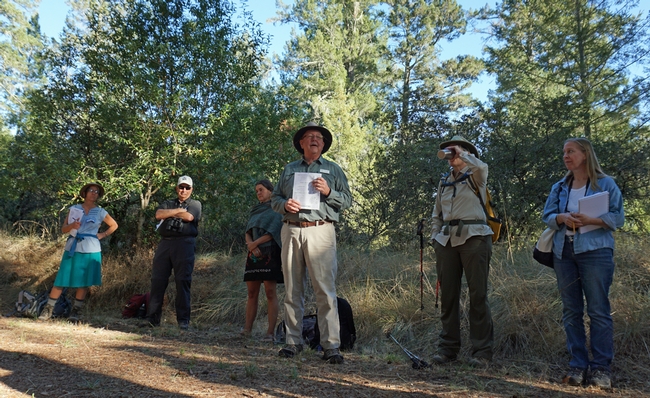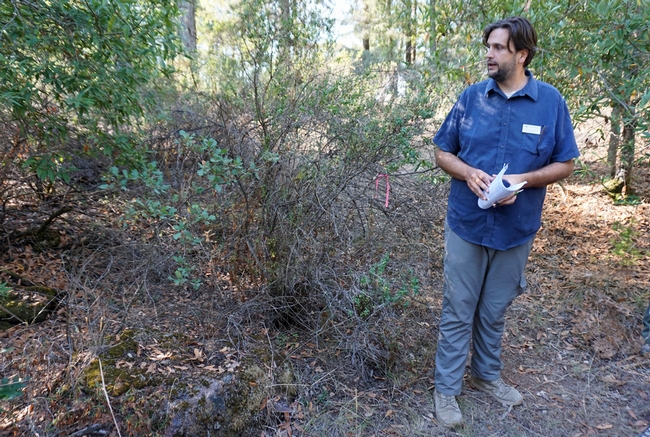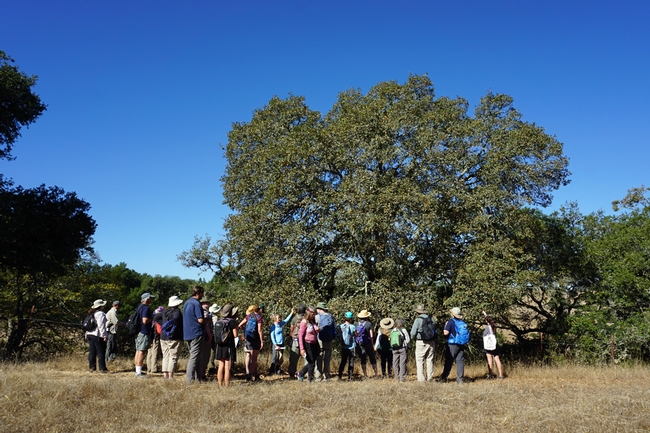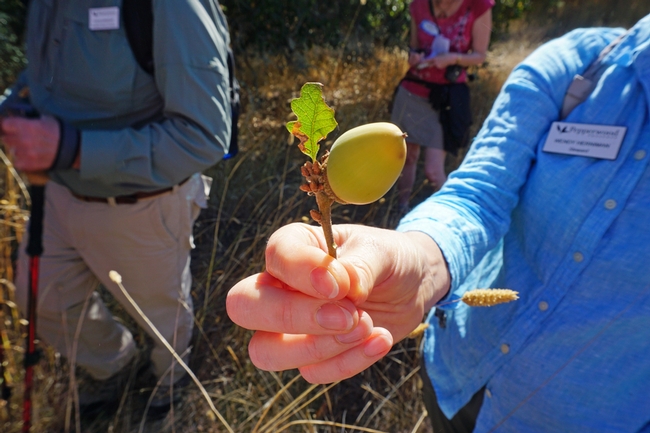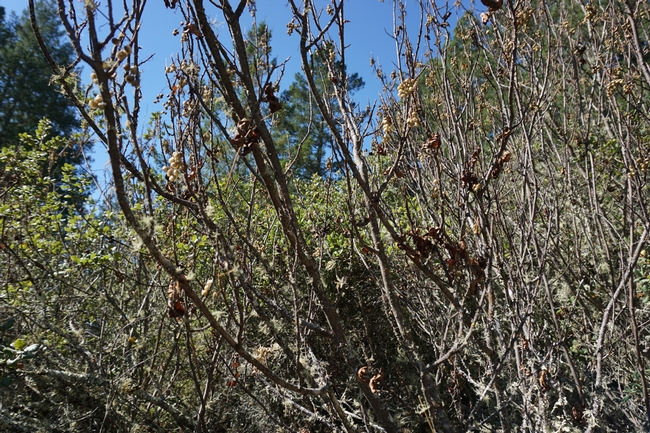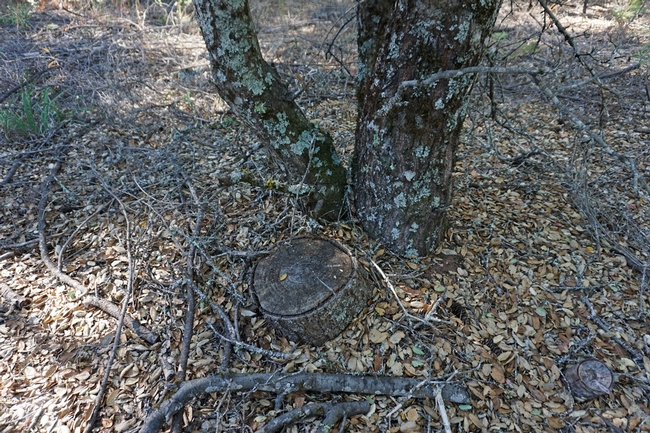Knowing the names of trees is a point of pride for many California Naturalists. So a walk among the diversity of oaks at the Pepperwood Preserve left many feeling humbled.
The three-hour excursion was part of the UC California Naturalist Regional Rendezvous in October at the 3,200-acre nature preserve nestled in the foothills between Napa Valley and Santa Rosa.
Excursion leader Steve Barnhart, academic director emeritus at Pepperwood, said there are 500 oak species in the world; 21 in California. But cohabitating on the rolling hills and valleys of the Golden State, many oaks have produced hybrids that combine characteristics, making identification challenging.
Doctoral candidate Phrahlada Papper, who is studying oak tree genetics, said, “I'm of the mind that you shouldn't ever name an oak.”
Even the tan oak, long thought to be misnamed, is coming under new scrutiny.
“It's not an oak,” Barnhart said. “It has acorns, male and female flowers on the same stalk, but tan oaks are insect pollinated. True oaks are wind pollinated. Tan oaks are closer to chestnuts.”
But Papper raised his hand. “Genetically, it might be an oak,” he said.
Barnhart laughed. “So tan oak is up in the air. That's why it's so much fun to be in science,” he said. “I learned something today.”
In popular culture, oaks are thought to be majestic, towering trees, with wide spreading branches. However, Barnhart said, most California oaks are shrubs, including the leather oak.
Leather oaks grow in serpentine soils and have the ability to produce two types of flowers, one in the spring and another quite different in the fall. Leather oaks are monoecious, they have both male and female flowers on the same plant. On a particular leather oak at Pepperwood, Papper was surprised to find male and female flower parts in one bract and surmised that weather patterns may be responsible.
“California has weird weather and with climate change, it's getting even more weird,” Papper said.
Papper believes tracking phenology, the cyclic and seasonal changes in plants, is an ideal citizen science project for California Naturalists. One such project underway at Pepperwood is led by Wendy Herniman. A University of Edinburgh, Scotland, master's student, Heniman is documenting the phenology of 10 Pepperwood oak trees: 2 blue oaks, 3 coast live oaks, 2 black oaks and 3 Oregon oaks.
“Pepperwood is looking at climate change. It's a designated sentinel site. We're monitoring fog, we have soil probes, and we're collecting all weather and climate information. We can tie that to phenology,” she said. “We're trying to find out if phenophases are changing.”
Understanding the changing phenophases is important, Barnhart said.
“Everything is connected,” he said. “If acorns are produced early, animals species that depend on the food source will be disrupted. You have imbalances in the timing of the natural world. With climate change, what are the effects we'll be seeing?”
